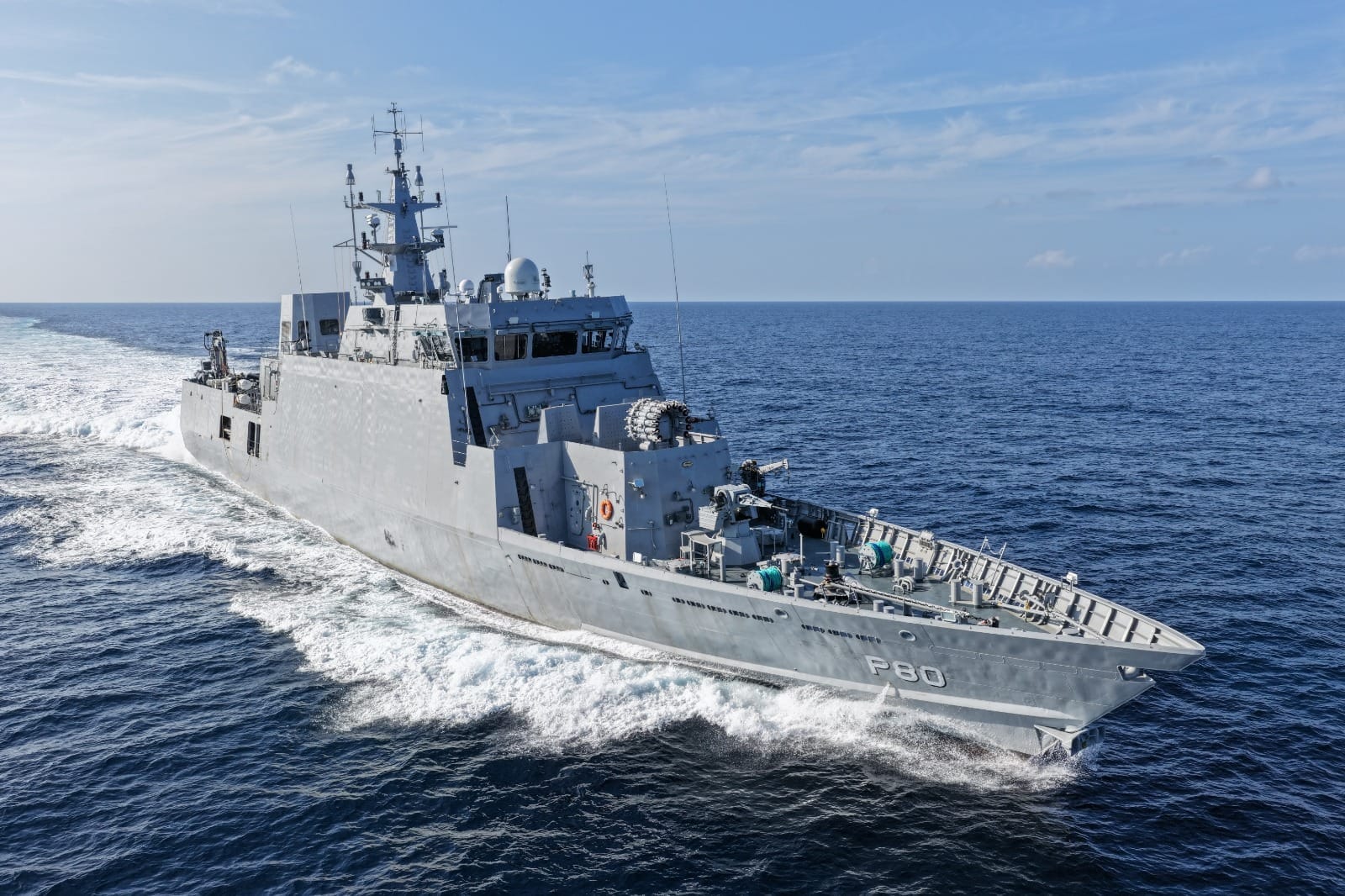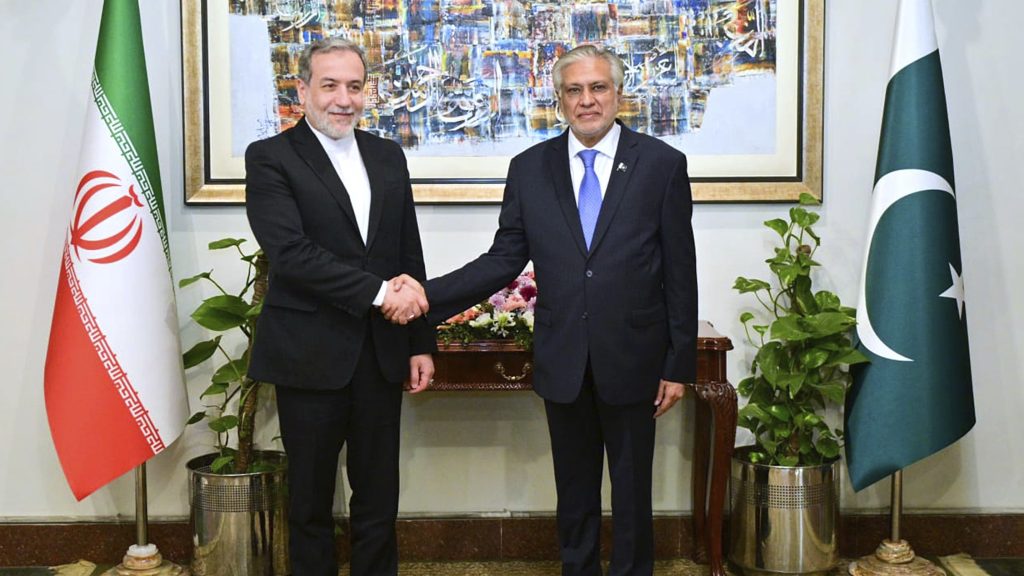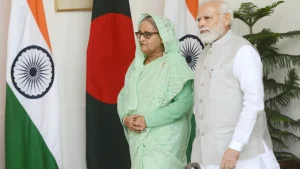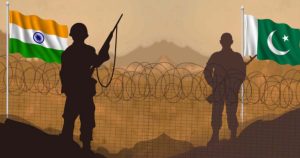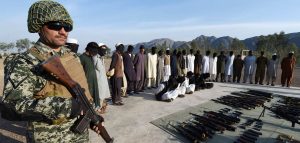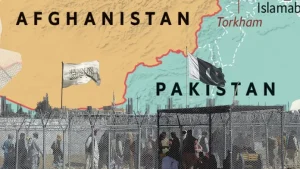The resurgence of the Taliban in Afghanistan has cast long shadows over the regional geopolitical landscape, profoundly impacting the intricate relationship between its neighbours: Iran and Pakistan. Historically marked by periods of cooperation and underlying tension, the dynamics between Tehran and Islamabad are now further complicated by the new regime in Kabul. Understanding this triangular relationship is crucial for comprehending the future of regional stability. For both Iran and Pakistan, the Taliban’s 2021 takeover prompted both apprehension as well as pragmatic engagement. Sharing lengthy, porous borders with Afghanistan has made both nations acutely vulnerable to spillover effects like refugee influxes, transnational terrorism, and illicit trade. However, their historical experiences, strategic priorities, and sectarian considerations have led to distinct, and at times divergent, approaches to the new dispensation in Kabul.
Shared Concerns: The Spectre of Instability and Terrorism
A primary concern for both Tehran and Islamabad is the potential for Afghanistan to once again become a breeding ground for extremist ideologies and a safe haven for terrorist organizations. Both nations have suffered significantly from terrorism emanating from Afghan soil. Pakistan has grappled with the Tehrik-i-Taliban Pakistan (TTP), which has found refuge and operational space in Afghanistan. Iran remains wary of the broader Sunni extremist threat, particularly ISIS-Khorasan (ISIS-K), and the potential for its own restive ethnic minority regions bordering Afghanistan to be influenced by radical elements.
The Taliban’s capacity to prevent terrorist groups from operating across international borders remains a significant point of contention. Despite assurances, skepticism persists in Tehran and Islamabad regarding the Taliban’s long-term commitment or capability. This shared anxiety forms an uneasy common ground, compelling both states to pursue a cautious and coordinated engagement with Kabul. This mutual vulnerability to non-state actors is a powerful driver for dialogue, even when strategic interests diverge.
Moreover, the humanitarian crisis and the risk of large-scale refugee movements remain significant concerns. Iran and Pakistan are already home to millions of Afghan refugees, and the Taliban’s return to power accelerated the mass exodus of Afghans, placing additional strain on resources and creating new socio-economic challenges for the host countries. Both nations have provided humanitarian assistance, but managing this long-term burden is a pressing issue and a potential source of friction.
The international community’s limited engagement has placed a disproportionate responsibility on Afghanistan’s neighbours, adding another layer of complexity to their bilateral and regional interactions. An unmanaged refugee crisis could easily destabilize border regions and strain internal security apparatuses, forcing both Iran and Pakistan to adopt more stringent and potentially conflicting border control policies.
Divergent Interests and Historical Baggage
Despite these shared concerns, historical baggage and differing strategic interests often lead to divergent approaches. Pakistan’s relationship with the Taliban is rooted in history and strategic considerations. While not officially endorsing the takeover, Pakistan’s historical connections provide complex leverage. Islamabad seeks a stable, friendly, and non-hostile government in Kabul that is responsive to its security concerns, particularly regarding the TTP and the Durand Line. This has led Pakistan to advocate for greater international engagement with the Taliban regime, hoping to moderate its policies through integration rather than isolation.
Conversely, Iran’s relationship with the Taliban has been more fraught. As a Shia nation, Tehran was wary of the Sunni-dominated Taliban in the 1990s, especially after the massacre of Shia Hazaras, which brought the two sides to the brink of war. Recent engagement, driven by the need to counter ISIS-K, has not erased this deep-seated mistrust. Iran views an inclusive government in Kabul, representing all ethnic and sectarian groups, including Tajiks, Uzbeks, and Hazaras, as essential for long-term stability, a vision clashing with the Taliban’s current Pashtun-dominated composition.
Tehran\’s strategic calculus is also influenced by its rivalry with the United States and Saudi Arabia, making it cautious of any regime in Kabul that could align with its adversaries. However, Pakistan’s call for an inclusive government in Afghanistan, which could serve as common ground for cooperation between Iran and Pakistan.
Potential Flashpoints and Areas of Competition
Afghanistan’s sectarian divisions remain a key flashpoint. The Taliban, predominantly Sunni Pashtuns, contrast sharply with Iran’s support for the Shia Hazara community. Any persecution of the Hazaras could provoke a strong reaction from Iran, heightening tensions with the Taliban and, by extension, Pakistan.
The dispute over the Helmand River water rights is another significant friction point between Iran and Taliban-led Afghanistan. Growing scarcity and the impacts of climate change have intensified this issue. Any escalation could involve Pakistan, given its vested interest in regional water stability and its relationship with Kabul.
The long, porous borders are conduits for illicit activities, including drug trafficking and smuggling. Divergent approaches, like mutual accusations of tolerating cross-border criminal networks, could become serious points of contention. While both Iran and Pakistan seek influence in Kabul, their visions for Afghanistan diverge. Competition for sway, whether through political engagement, economic projects, or cultural outreach, could lead to indirect rivalry and erode trust.
Navigating the Path Forward: Pragmatism and Cooperation
Despite these complexities, both Iran and Pakistan recognize the importance of pragmatic engagement – both with the Taliban and with each other. Total disengagement risks further destabilization, exacerbating shared security concerns.
Regular bilateral and trilateral dialogues are essential to address shared concerns, build trust, and explore cooperation in key areas such as border security, counterterrorism, and humanitarian assistance. Platforms like the Moscow Format and other regional dialogue initiatives offer valuable opportunities for such engagement.
Strengthening economic ties with Afghanistan could also enhance regional stability. Iran and Pakistan might explore joint projects, such as improving trade corridors through the Chabahar and Gwadar ports, to build economic interdependence, foster integration, and diminish the appeal of extremist narratives.
Both countries should continue to leverage their influence to advocate for an inclusive government in Kabul. Lasting stability in Afghanistan is unattainable without a political settlement that reflects the nation’s diverse ethnic and sectarian fabric.
Finally, reinforcing regional security frameworks can enable collective responses to shared threats. Collaborative efforts in counter-narcotics operations and intelligence sharing on terrorist networks are likely to be far more effective than unilateral approaches.
The Taliban\’s control of Afghanistan presents a complex geopolitical challenge for Iran-Pakistan relations. While shared security concerns provide a basis for cooperation, divergent interests and historical baggage necessitate careful navigation.



